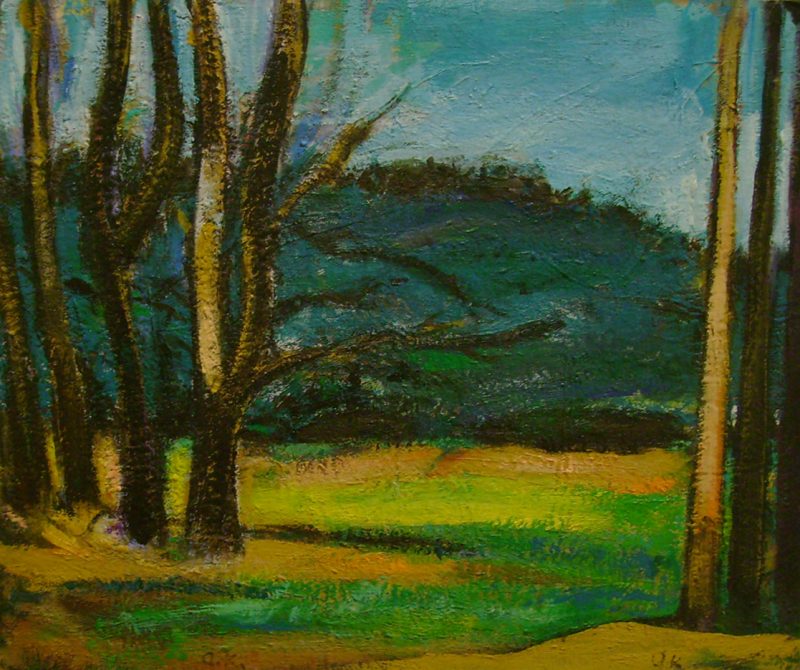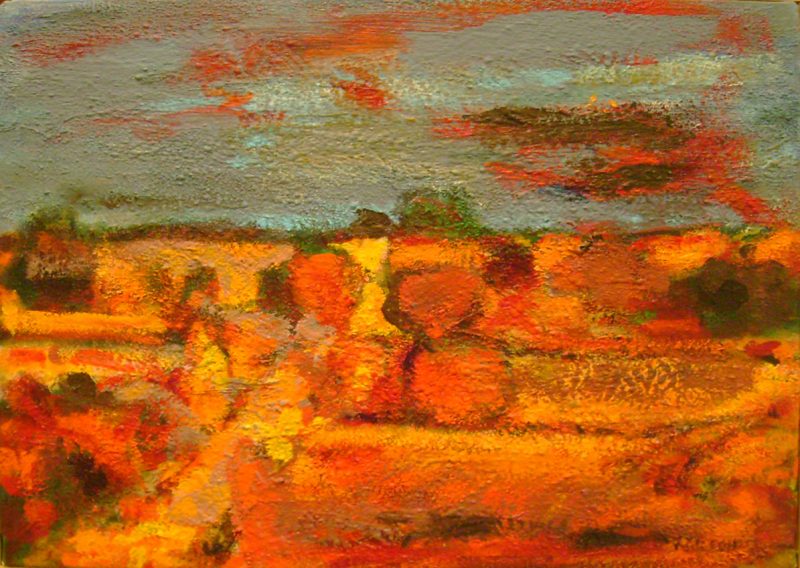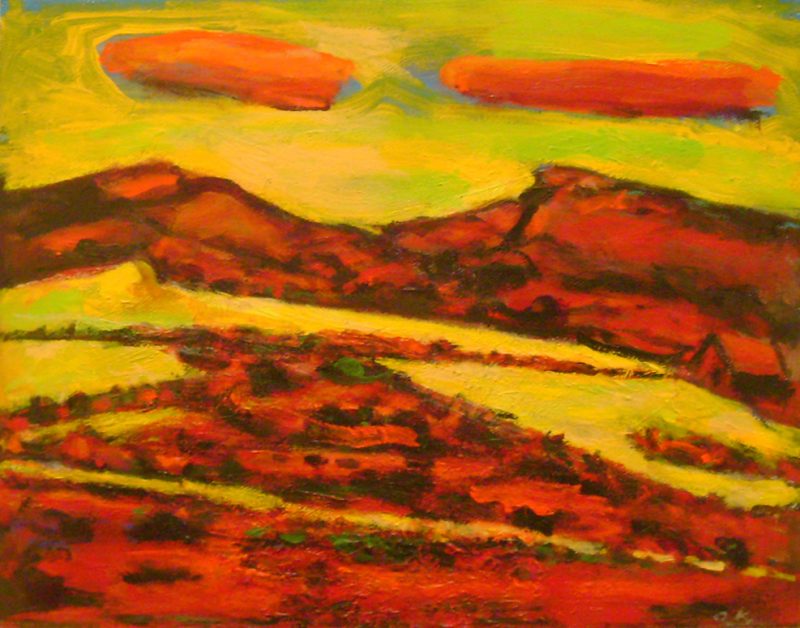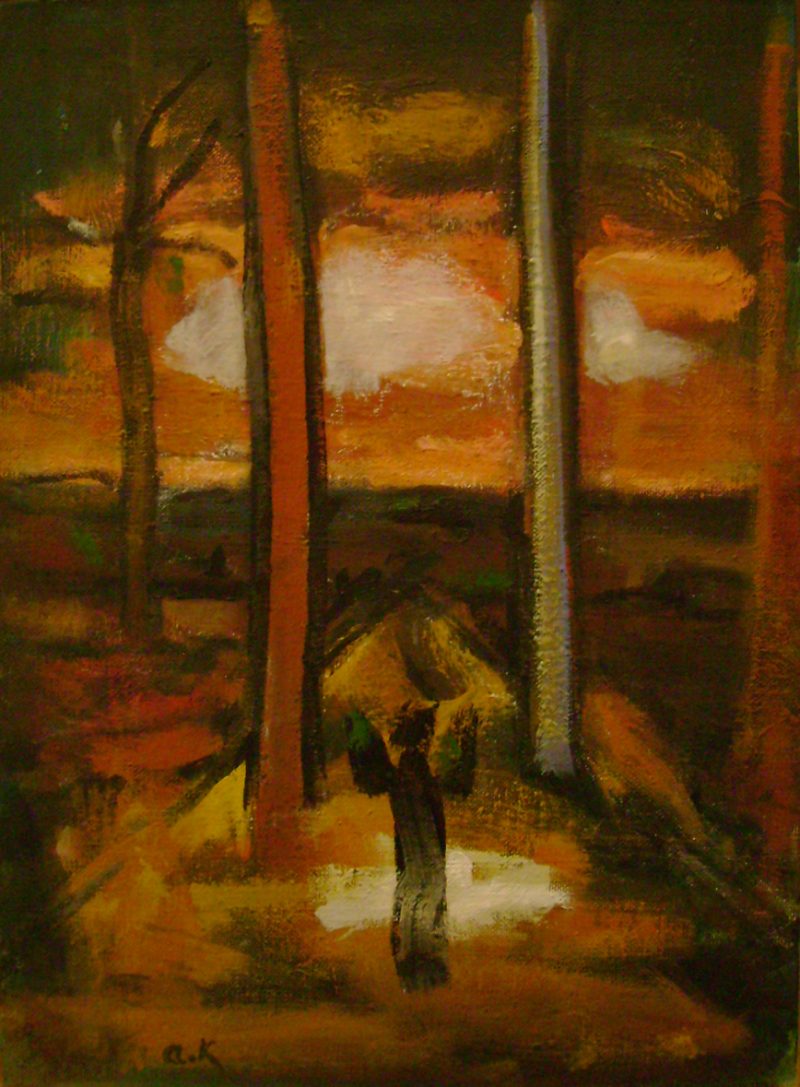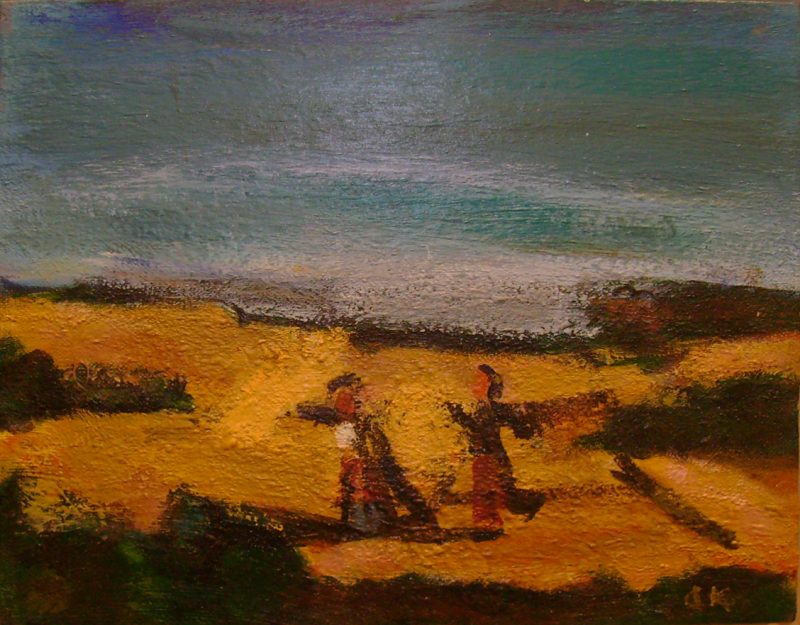Al Kresch has been dealing with the same motifs for at least 40 years. The earlier paintings that I have seen, not unlike the best work of Derain and Marquet, show him reacting not only to the largest forming and emotion issues in the landscape, but also to very small and intimate ones, without, nevertheless, losing a certain broad, grand sweep. Kresch has always seen that grand sweep, no matter the level of abstraction in his work.
Now, looking at the mastery in his recent work, it is clear that while he learned a great deal from his many years of close study, he is most taken with the broad sweep — the gesture of the landscape in its enormous space, out of scale to the ordinary person, with his viewpoint on the ground at a distance.
As the landscape century, the 19th century offers us many examples of artists who responded to Burke’s notion of nature as sublime. The greatest of them, and the most consistently sublime in his landscapes, was Courbet. Al Kresch’s new paintings reveal a very strong sense of Courbet’s feeling for landscape. Courbet did not try to depict nature’s minutia, but rather captured its broad sweep and grand rhythms, as does Kresch.
In the 20th century before him, the artist who reflected this the most was George Roualt. I think Kresch gets to Roualt as an influence because of how he sees the motif with Courbet. Roualt is not his master, but a comrade on the way to intensifying and purifying his view of that overwhelming landscape out there, the one that makes us feel our own size, and eventually reverses the size so that we can see ourselves as larger than, rather smaller than the motif.
As a result of his openness to models from earlier generations, he becomes a more radical and original artist himself. Originality,especially originality that has meaning for us, is not found in ignorance of past examples, or ignorance of the motif, but in using as much knowledge from many sources available to us to arrive at our notions of the motif. Too many times we say to ourselves, I am just a painter, I cannot use all of that knowledge in making the picture. Kresch does not do that. Whatever he knows and feels is an important part of what he has to say to us about the motif. This makes him an important landscape painter for our time, since what he feels during the experience of painting becomes a source of new knowledge for anyone experiencing his new painting.
It may seem harder now to see an artist shaping the thoughts and feelings of his contemporaries in their social and political stances, but insofar as any observer must feel the strength of Kresch’s emotion and forming of the motif, he is changed. This change, which exhilarates and lifts up every viewer, also has a political dimension as well. We begin to believe in the goodness and fullness of man through experiencing the goodness and fullness of each painting, and in this way we become better citizens.
– Gabriel Laderman
Note: This essay first appeared on Gabriel Laderman’s blog and is reprinted here with permission.
Galleries Painting
